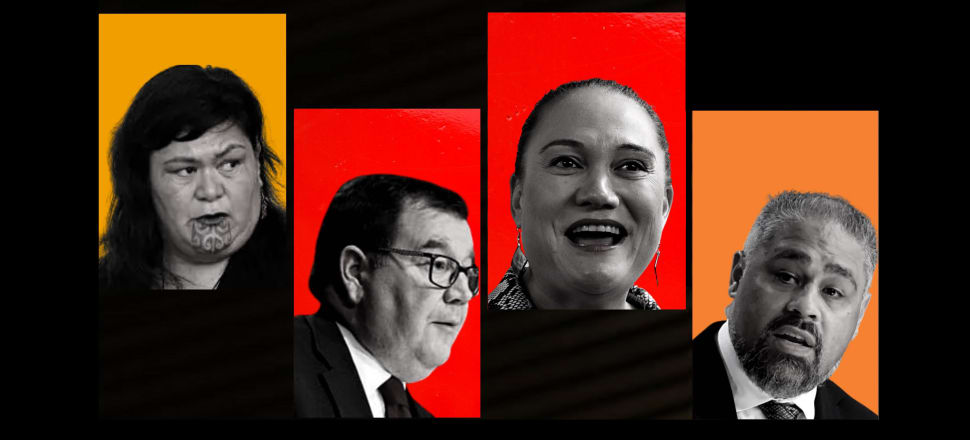
While Chris Hipkins is all but confirmed as our next prime minister, there is less certainty in the race to be his deputy. Sam Sachdeva looks at the factors the next Labour leader will need to consider, and some of the candidates.
Barring drama to match any of the past few years, we now know the identity of New Zealand’s next prime minister.
With Chris Hipkins the sole nominee to replace Jacinda Ardern as Labour Party leader, and the two-thirds majority he requires to avoid a more formal contest seeming like a formality, it is the Remutaka MP who is set to emerge as the nation’s new leader on Sunday afternoon.
But who will be standing alongside Hipkins to nod supportively as his deputy prime minister?
In some respects, that could be seen as a tougher decision than settling on the top job.
READ MORE:
* Chris Hipkins set to become PM
* Who is the new prime minister Chris Hipkins
* Ardern's rare, personal candour in shock resignation
A deputy leader needs to complement the skill set and character traits of their boss, as well as their more rudimentary demographics and geography. They should be confident and skilled enough to step in seamlessly when the leader is away - but not so talented and ambitious as to inspire speculation about whether the batting order is the wrong way around.
Labour has already had to navigate these issues under Ardern.
When she took over from Andrew Little ahead of the 2017 election, her preference surely would have been to have Robertson as her deputy, given their close friendship and similar views; when Robertson made a failed run for the Labour leadership in 2014, it was with Ardern as his preferred 2IC.
But with the pair too alike (both former political staffers, and sitting towards the left of the Labour spectrum) it was instead ex-school principal Kelvin Davis who became the party’s first Māori deputy leader.
After New Zealand First fell out of Parliament at the 2020 election, meaning Winston Peters vacated the position of deputy prime minister, Ardern had to deal with another conundrum.
Would it be Davis who replaced Peters, given his existing leadership role, or would she take the opportunity to elevate Robertson?
Again, her choice would have naturally been the latter given some of Davis’ struggles when filling in as prime minister, but given the importance of Māori representation within the party forcing him out would have been a dangerous move.
In the end, Davis sacrificed himself for the greater good, staying on as the party’s deputy leader but stepping aside to let Robertson take on the deputy prime ministership.
In theory, there is no vacancy for either position - but in reality, it seems likely that both will lose those roles, given Hipkins will want to put his own stamp on the party and the Government.
The sensitivities that emerged around Davis’ decision, as well as the importance that Labour has assigned to improving Crown-Māori relations, are why many expect Hipkins’ deputy to hail from the Māori caucus.
In a vacuum, Nanaia Mahuta would be the perfect candidate. As Labour’s longest-serving MP, a minister in two separate governments and a member of Māori royalty, the Foreign Affairs Minister has the requisite mana both inside the party and Māoridom.
But the toxicity that has surrounded the Three Waters policy, as well as the way Mahuta has become a lightning rod for scaremongering about the Government’s co-governance agenda, make such an appointment a tough sell (even if she could be persuaded to run).
Defence Minister and Tāmaki Makaurau MP Peeni Henare, one alternative, does have the requisite standing and has performed ably in his ministerial portfolios, in addition to hailing from Auckland.
But given suggestions that Henare has been eyeing the exit door ahead of the election, as well the fact his appointment would mean two men atop the party, makes that unlikely.
That was why Kiri Allan, a rainbow Māori MP and perfect demonstration of Labour’s argument that it best represents the diversity of Aotearoa, had seemed a natural choice for many. However, she reportedly ruled herself out Saturday morning, clearing the way for Social Development Minister Carmel Sepuloni.
Sepuloni has been one of the Government’s more reliable performers in what can be a difficult portfolio given supporters’ expectations, and her name has come up frequently as a contender.
She is Tongan and Samoan rather than Māori, but Labour’s growing Pasifika caucus may well have some sway of its own, while she hails from Auckland to offset Hipkins’ Wellington roots.
Sepuloni also appears to enjoy a warm relationship with the putative prime minister, and is respected across the party.
But how would the Māori caucus feel about having no representation in any of the three top ministerial roles? (While there are no guarantees, it seems highly likely Robertson will stay on as finance minister which would presumably command the third ranking in Cabinet).
It is still Hipkins who will have the greatest impact on Labour’s re-election chances - but who he picks to run alongside him, and how it is received by the party, could well be a significant factor too.







